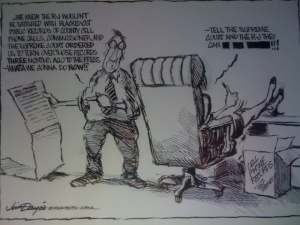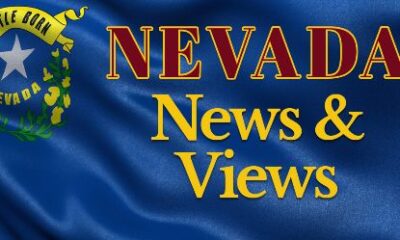(Thomas Mitchell/4thst8.wordpress.com) I can’t wait to read who the top 100 PERS recipients are on Transparent Nevada. The names and the numbers should be eye-popping.
After decades of stonewalling, dissembling and pretending the law said something it was never intended to say, earlier this month the Reno Gazette-Journal convinced a state district judge that the names and pensions of state and local retirees in the Public Employees’ Retirement System of Nevada are indeed public records.
“Had the Nevada Legislature intended differently — that is, had the Legislature intended that the information requested by the RGJ in this matter be confidential — it would have stated so,” District Court Judge James Russell wrote. “But it did not.”
State law requires that PERS official correspondence and records, “other than the files of individual members or retired employees,” are “public records and are available for public inspection.”
PERS had taken the concept of a file to mean just about anything and everything about just about everyone.
If the taxpayers thought the salaries of state and local public employees found on Transparent Nevada were obscene, wait till they get a peak at what former — and far too often double-dipping — retirees are being paid — after retiring at the age of 50 and younger — for so long as they live, and some of their spouses beyond that.
Some of the judge’s rationale bears repeating lest anyone be swayed by the specious argument that the pensions of public employees are somehow a matter of privacy that outweighs the public’s right to see how their tax money is being squandered. (And, yes, the pension fund is almost entirely underwritten by the taxpayer, whether is it through direct tax payments or laundered through the tax-paid salaries and then deducted for the pension.)
Judge Russell points out that the Nevada Administrative Code expressly states that names and compensation of public workers is public information. “It thus follows that the names of retired public employees and the amounts of pension benefits, following to them as a result of the compensation amounts paid to them while they were public employees are likewise public information.”
He also cited a California court case that specifically found the phrase “individual records of members” of a public pension program — very similar to the language in Nevada law, “files of individual members or retired employees” — did not mean names and benefit amounts may be kept confidential.
The judge even brought up an old case that has too often bitten defenders of public access in the arse: Donrey v. Bradshaw.
In the 1990 case Donrey Media, which owned the Review-Journal in Las Vegas and KOLO-TV in Reno, along with the Gazette-Journal sought to see a police investigation into whether brothel owner Joe Conforte might have offered a bribe to a public official in order to obtain dismissal of charges of contributing to the delinquency of a minor.
Such investigations are confidential by law. But the Nevada Supreme Court applied a “balancing test” and found the public interest outweighed any privacy concerns. On a number of occasions since then various public bodies have used the “balancing test” to declare records clearly public by law to be confidential due to some vague privacy or security concern.
Judge Russell applied the balancing test and found the privacy concerns wanting.
The judge did allow that addresses of private homes and Social Security numbers and the names of persons who might be working undercover could be withheld, which is only reasonable.
The case in which the Review-Journal won in 2000 the right to see cellular phone records of Clark County commissioners also was cited. Using the law itself and other court cases, Judge Russell stated the law should be “construed liberally” and limitations on disclosure “construed narrowly.”
If enough people begin to use the information in the public record, perhaps enough lawmakers will be persuaded it is time to ratchet down the free spending on public employee wages and benefits.
Here is the judge’s ruling:





Facebook
Twitter
Pinterest
RSS